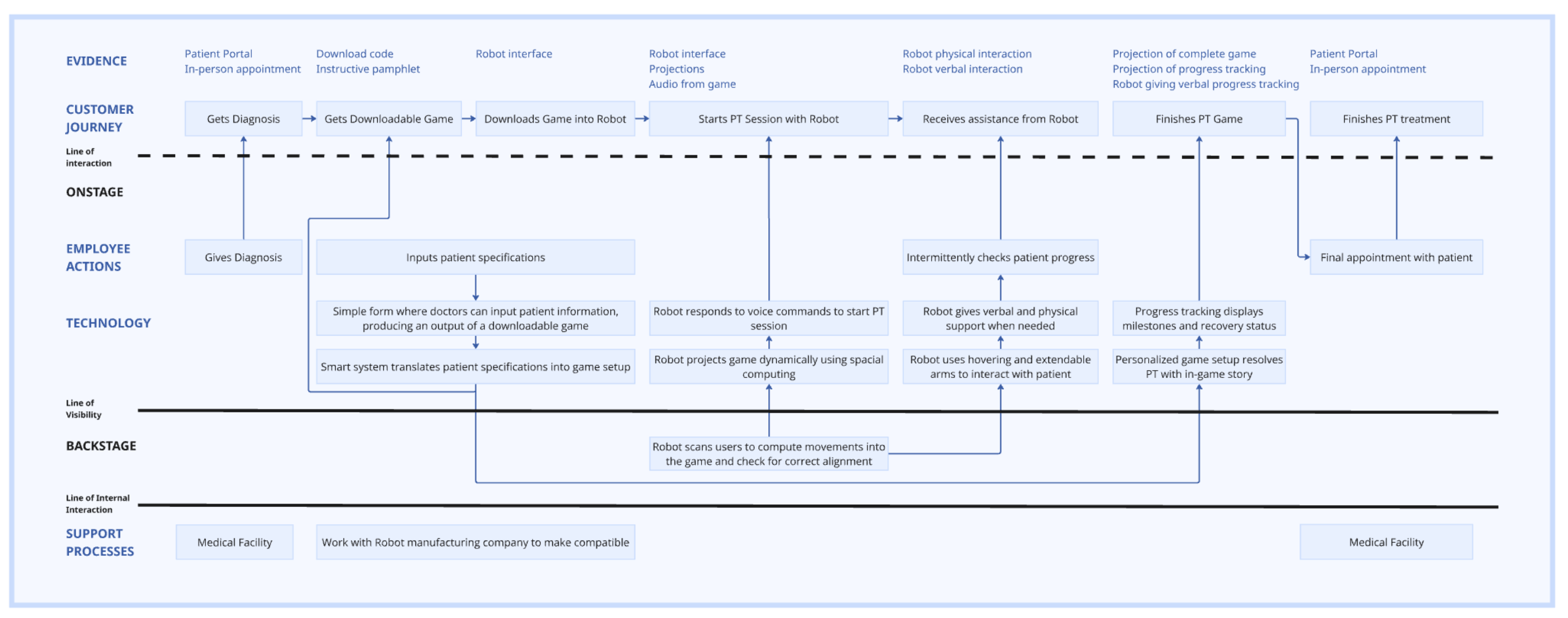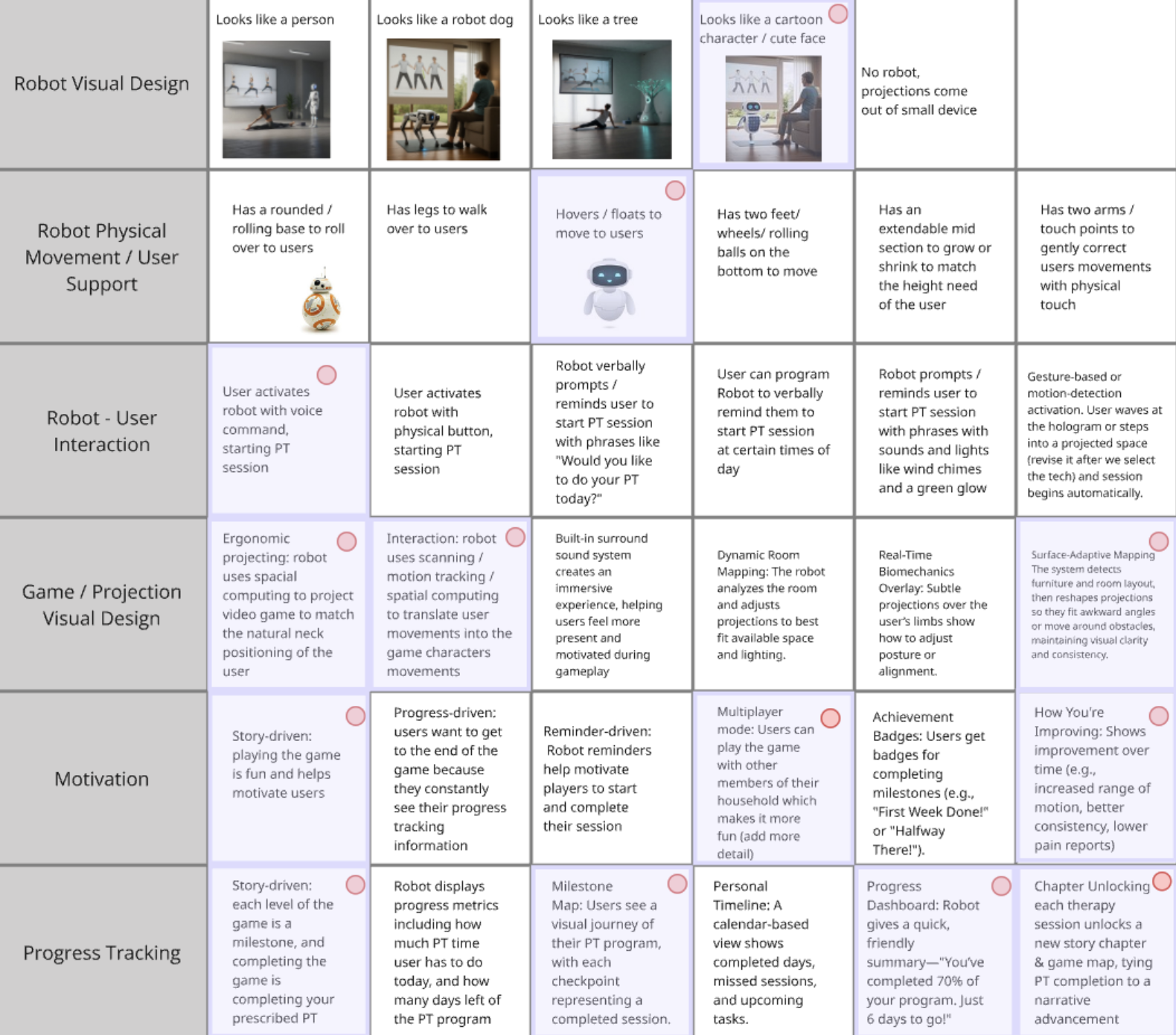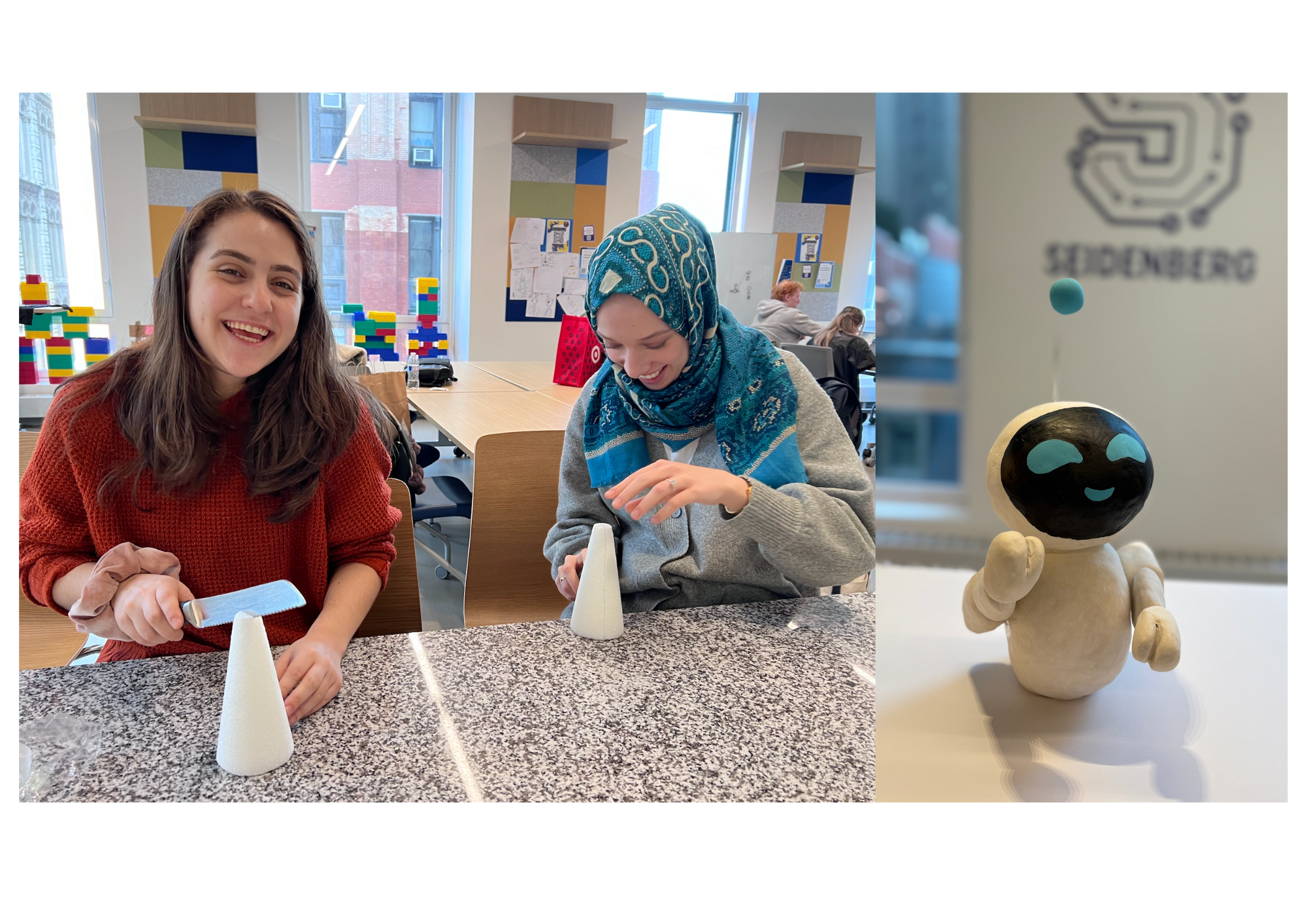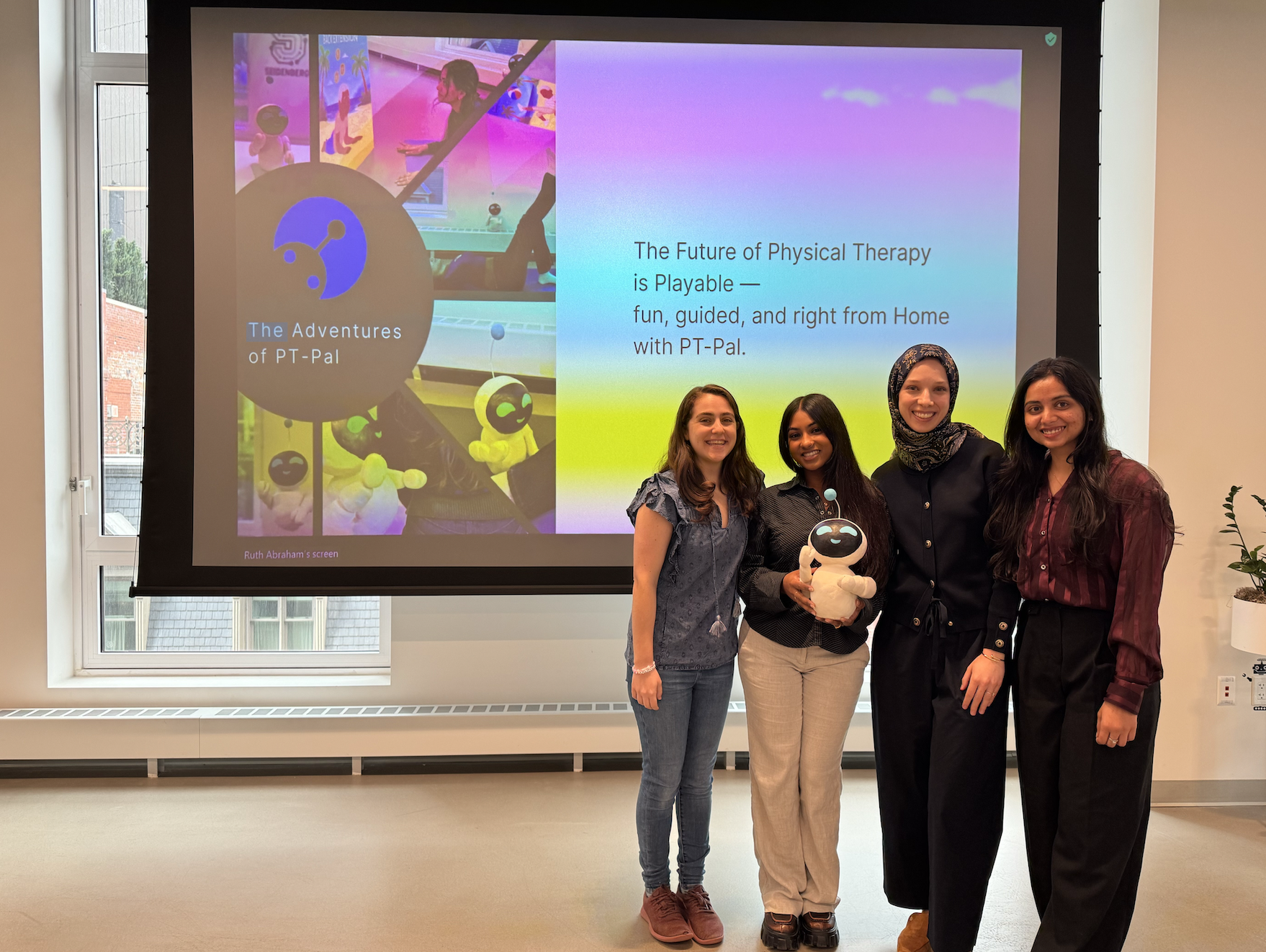The Process
Secondary Research
First, we conducted a literature review to research the current trends and future needs of rehabilitation, and determine potential causes of non-adherence to at-home exercises. Studies on non-adherence showed causes ranging from misperceived progress, to lack of guidance, to boredom.
We also conducted a competitive analysis of emerging technology that could be used in rehabilitation care including holograms, wearables, and AI / smart tech that could be applied to physical therapy solutions.
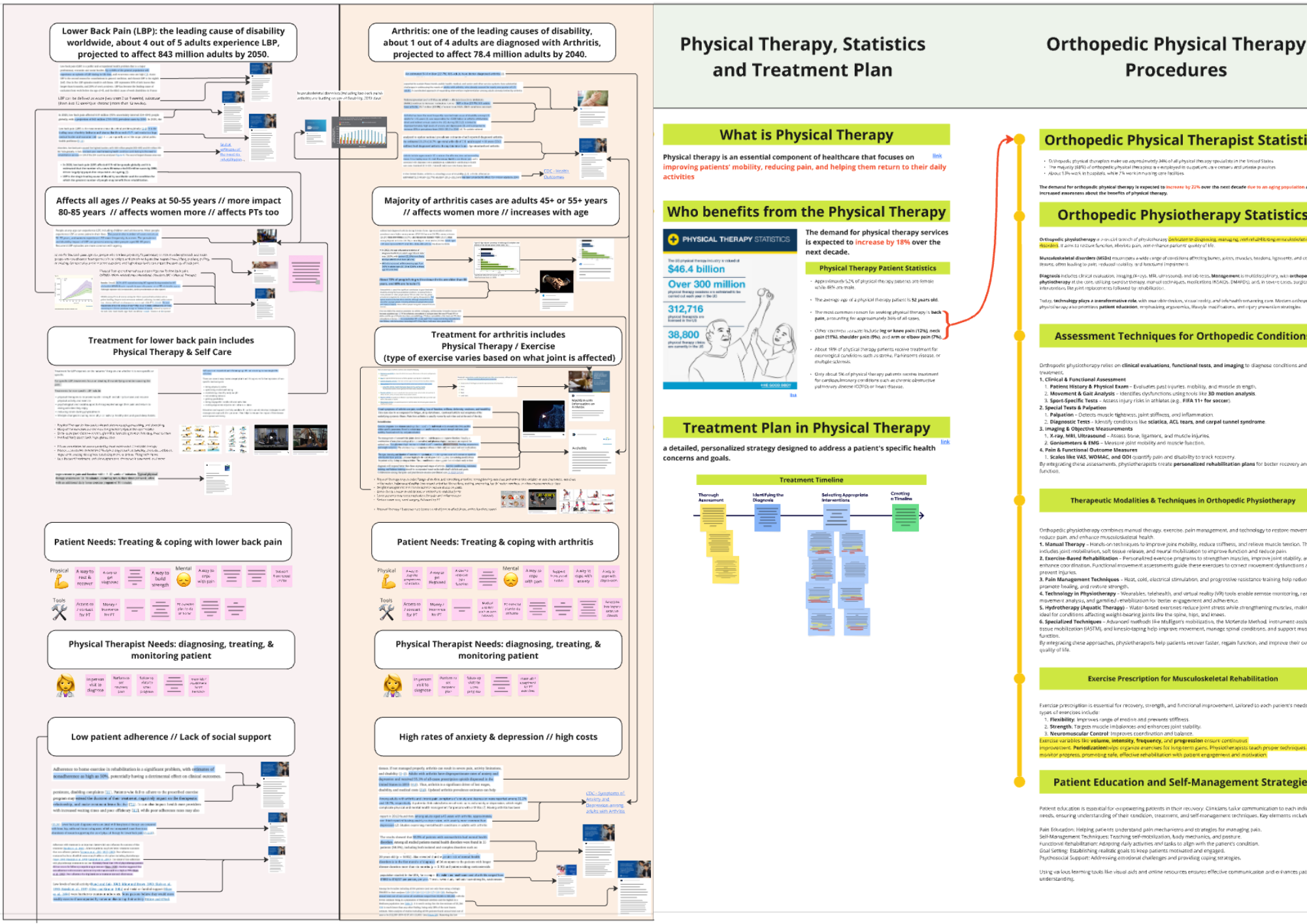
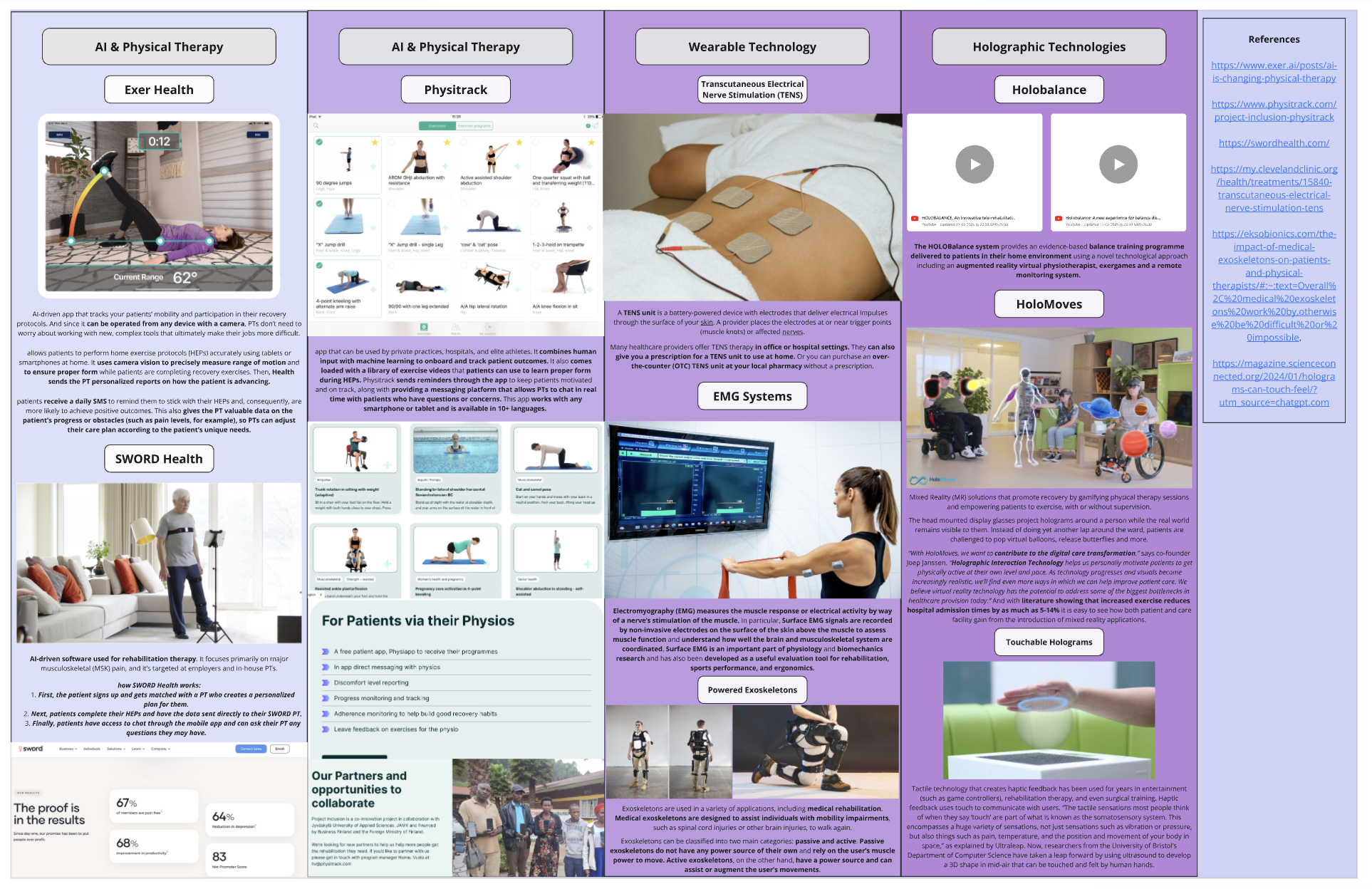
Future Scenario
Next, we used ARUPs 2050 futures as inspiration and created a STEEPLE to define a holistic picture of the future we were designing for.
We found that designing sustainable, portable solutions that patients could use at-home were critical in our future scenario.
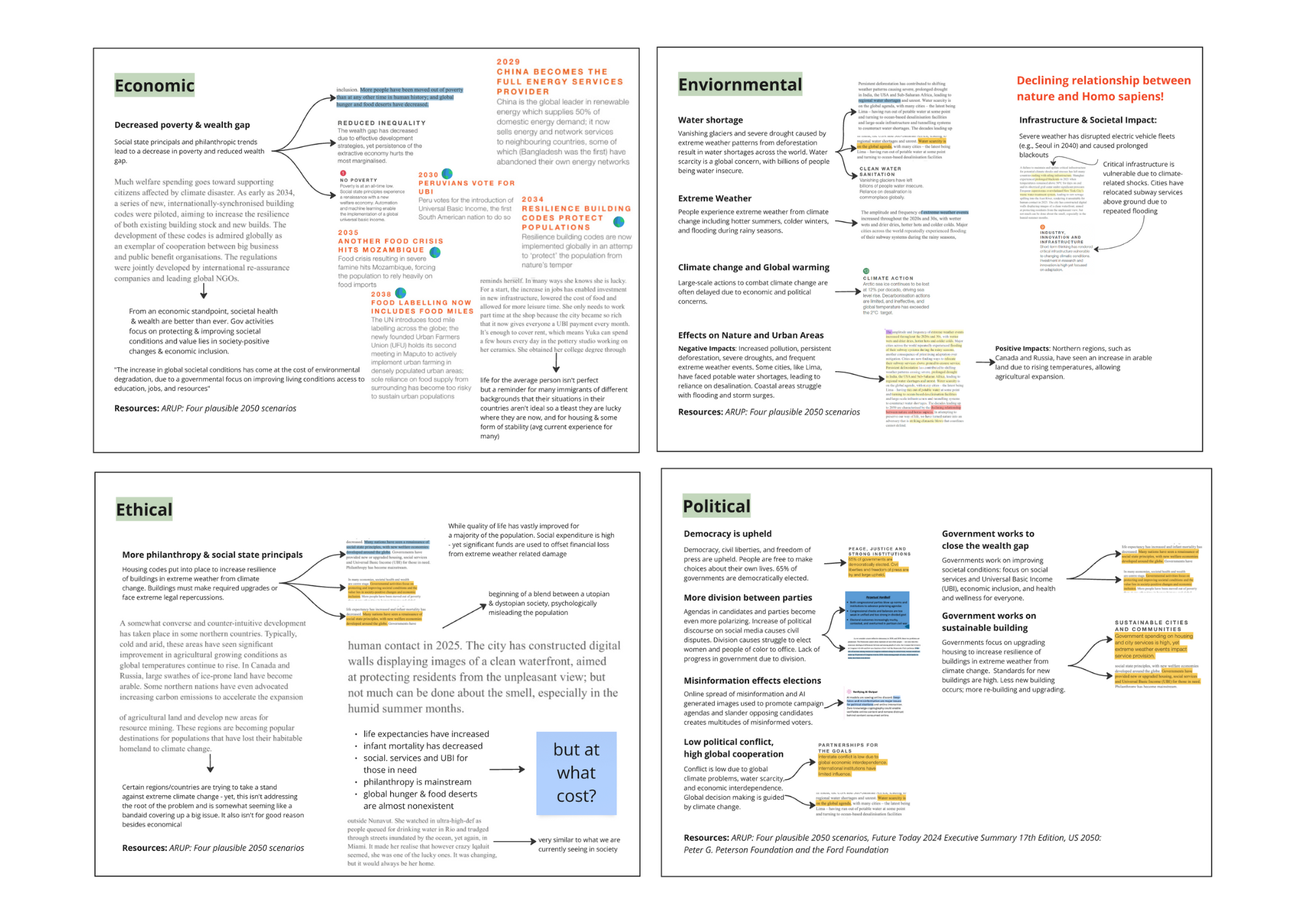
Primary Research
Then, we conducted semi-structured interviews with 5 orthopedic physical therapy patients, and 1 personal injury lawyer to discover patient feelings, needs, motivations, and pain points.
We discovered a wide range of patient needs during physical therapy and rehabilitation, including hands-on guidance, emotional support, motivation, enjoyment, convenience, and progress tracking.
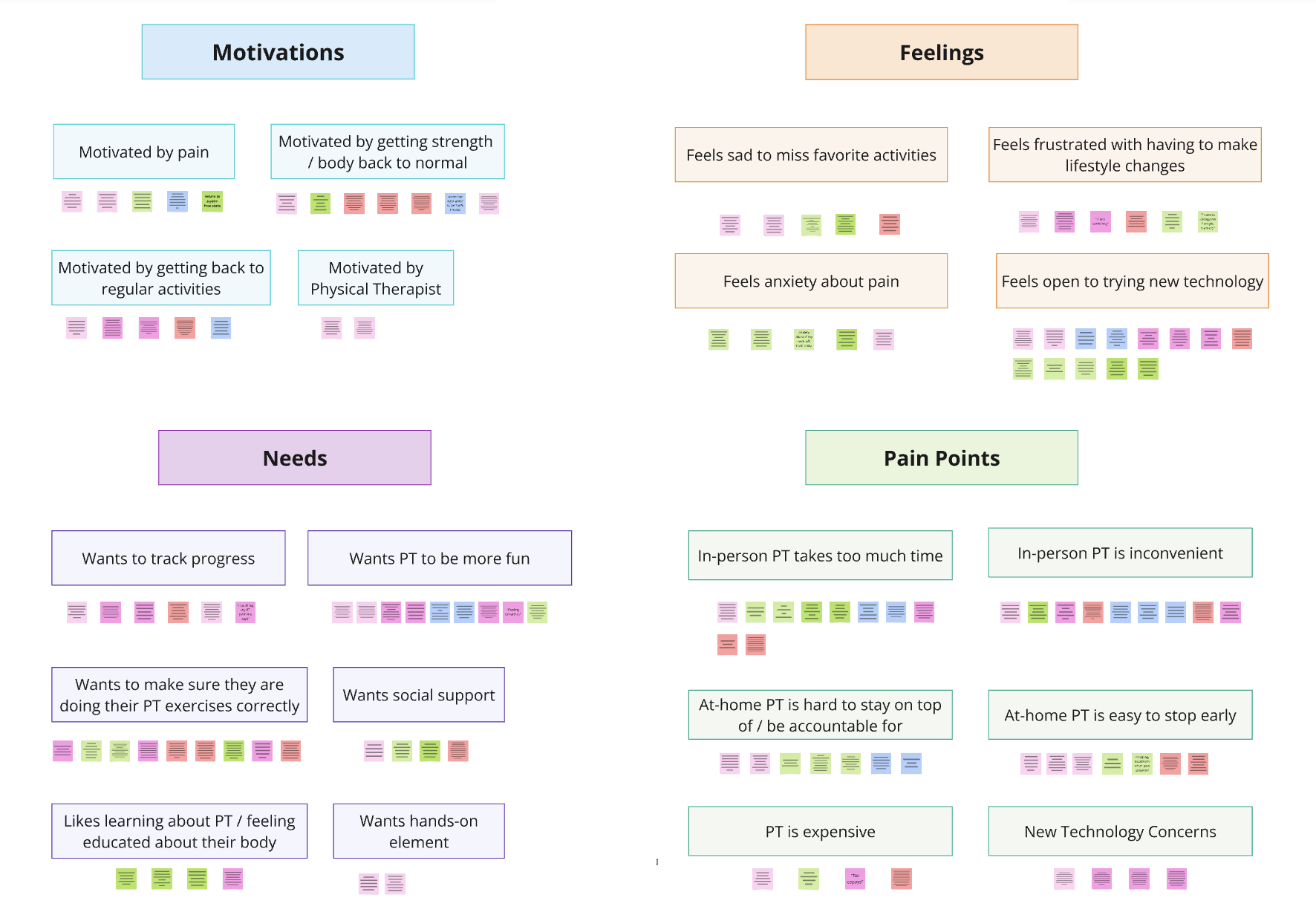
Define
Using these findings, we aligned on a problem statement and crafted personas, user stories, and a stakeholder map.
Throughout the design process, we utilized these documents to anchor our design decisions in the research, and put ourselves in the shoes of our users.
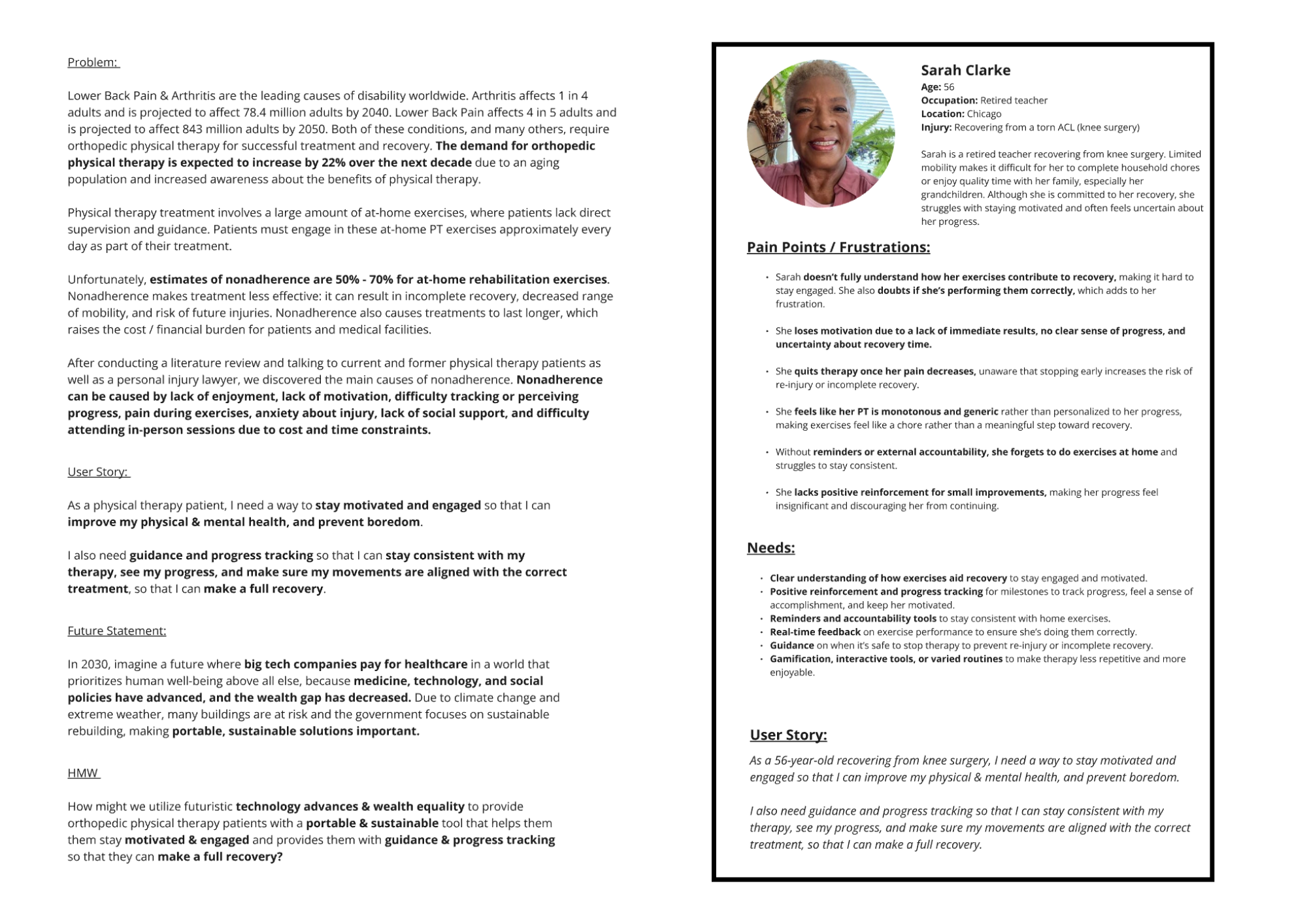

Ideate
With our problem defined, we started to think about how we might solve it.
As part of our ideation, we conducted a Behavior Analysis to identify anchors for change to achieve greater engagement in at-home Physical Therapy. With this, we identified key opportunities for intervention, including making home exercises a daily habit, setting realistic goals, and tracking progress.
We also used ideation through lenses with the interaction, architectural, cognitive, and ludic lenses. This helped us develop innovative ideas ranging from holographic guides, to robot companions, to wearables, to neural mapping.
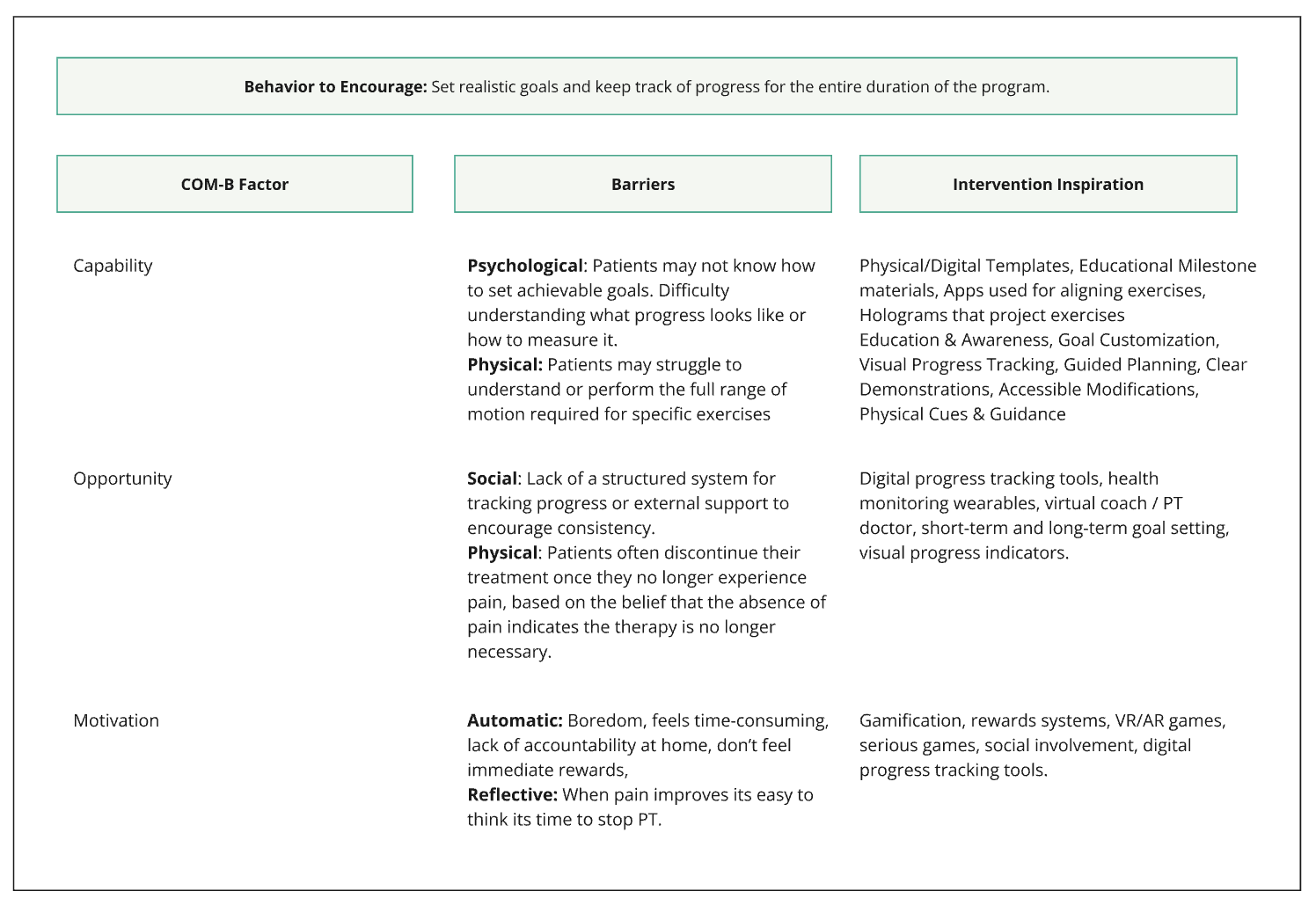
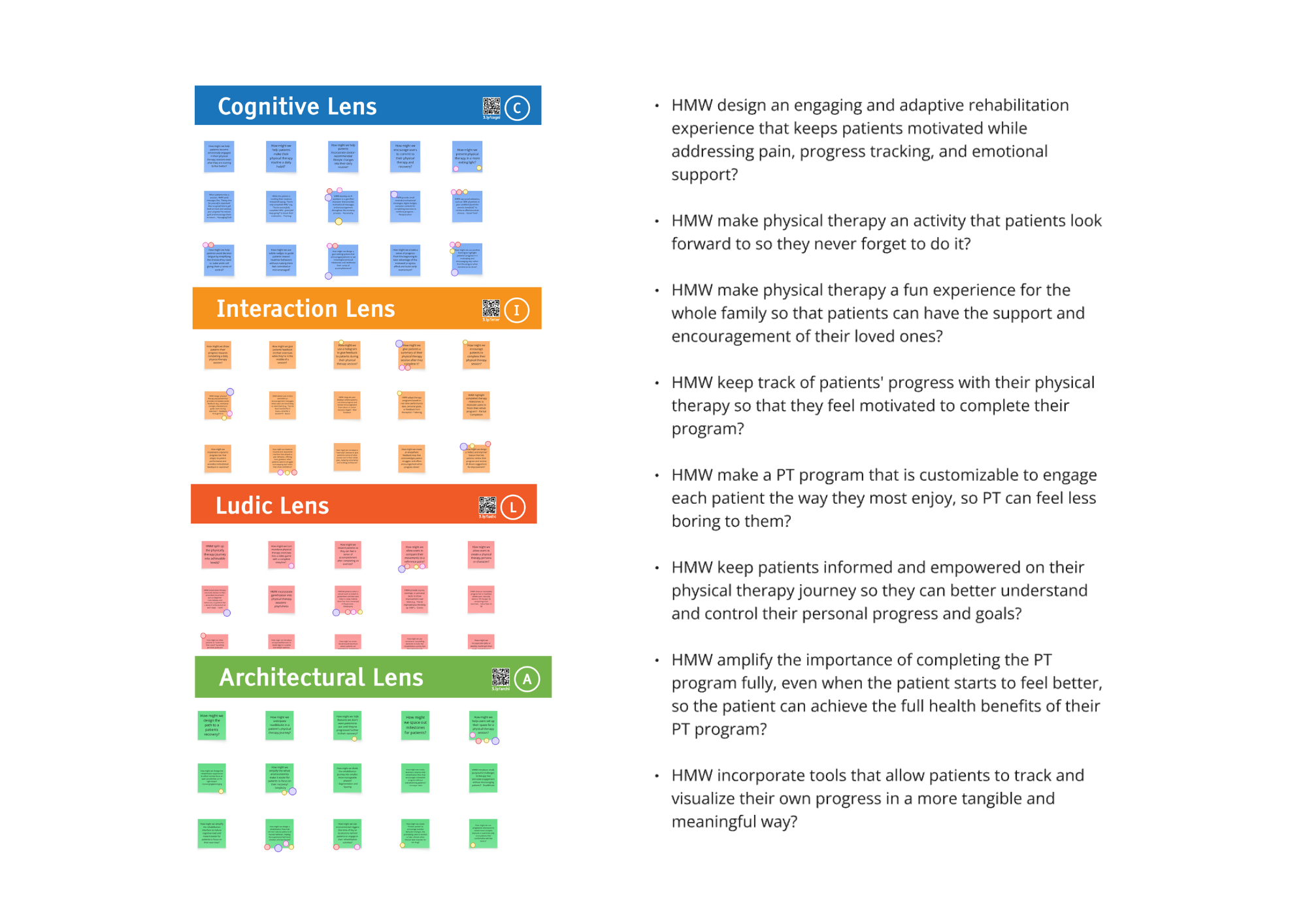
Prototype
Before we started prototyping, we needed to conduct more generative research on personal household robots and trends in emerging robotic technology to solidify our future scenario, and guide our robot design decisions.
In tandem with a literature review, we conducted 15 informal guerrilla user interviews to understand consumers’ feelings about different robot designs. We uncovered a potential fear factor with large, humanoid robots, and discovered higher likability and comfort with small, “cute” robots.
Next, we created a service blueprint and morphological chart to plan the specifics of our solution, and got to work prototyping our robot and game design.
